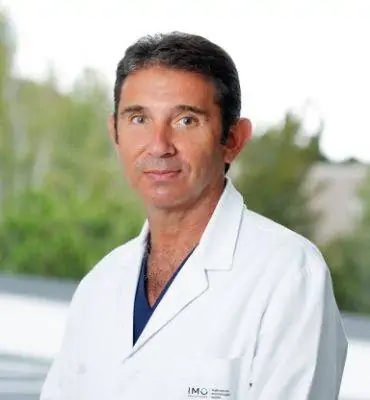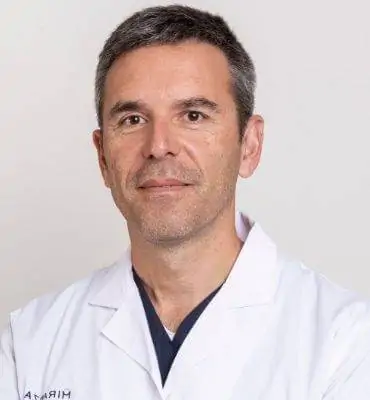What is thermal pulsation?
Thermal pulsation (LipiFlow) consists of the localised application of heat and therapeutic pressure on the four eyelids (upper and lower) with the aim of improving drainage of the Meibomian glands. These glands are responsible for providing the tears with oil to prevent evaporation and ensure good quality.
In which cases is it used?
LipiFlow is used to treat Meibomian gland dysfunction, related to blepharitis (inflammation) of the lower eyelids and ocular dryness. It is, in fact, the most common cause of dry eye, which is estimated to affect about 85% of patients with this disorder.
It usually affects elderly people, patients with hormonal disorders (adolescence and menopause), contact lens wearers due to overuse or those who have undergone skin disease treatment or chemotherapy.
Prior examination
Full optometric and ophthalmic examination, in addition to complementary tests that the specialist may request. This is the case, for example, of meibography, in which an anatomical image of the Meibomian glands is taken to determine correct functioning, specify diagnosis and enable subsequent assessment of the effectiveness of treatment.
During treatment
The application of thermal pulsation takes 12 minutes and is performed in the consulting room under topical anaesthesia (drops) to prevent any possible discomfort for the patient.
The LipiFlow system consists of a monitor that shows the parameters of the treatment and a sterile single-use piece that is placed over the eye, which is designed to protect the cornea and is equipped with multiple sensors that enable the temperature and pressure supplied to be controlled.
This piece provides heat (42.5°C) to the inside and outside of the eyelids, and massages from its outer side to release Meibomian gland obstructions and enable the secretion of the oil necessary to maintain tear quality.
After treatment
The treatment makes it possible to recover the stability of the tear film and reduce its evaporation, inflammation and damage to the ocular surface, thereby improving the patient’s symptoms.
It has proven to be more effective than the conventional application of hot swabs to the eyes to take care of eyelid hygiene, although they are not exclusive. It is also necessary to perform daily maintenance at home (see tips (new)) between sessions, usually repeated at 9 or 12 months, depending on the severity of the process.
Associated pathologies
Experts performing this treatment
FAQs
In situations where dry eye symptoms occur, such as contact with chlorine in swimming pools, exposure to the sun or wind, air conditioning and eye strain (reading, driving, etc.), eye drop use should be increased. If symptoms persist, however, patients should see an ophthalmologist to assess the possibility of using other treatments.
It is the result of tear secretion and eyelid disorders that can cause redness, itching, burning, the sensation of a foreign body in the eye and eyestrain. Proper lubrication of the eye is achieved with a correct balance of good-quality tear production and the normal functioning of the eyelids. When this balance is broken or altered by external factors, tear production decreases, and there is a propensity for dry eye to develop.
Normal cellular aging in humans leads to reduced tear production. In fact, it is estimated that between the ages of 10 and 40, tear production is reduced by 50%. In addition, other common causes of dry eye are eye infections (conjunctivitis, corneal ulcers, etc.), external or environmental factors (sun, wind, chlorine, contact lenses, etc.) and certain medication. Cosmetics and cleansing creams can also cause irritation and disrupt tear production.
IMO Institute of Ocular Microsurgery
Josep María Lladó, 3
08035 Barcelona
Phone: (+34) 934 000 700
E-mail: international@imo.es
See map on Google Maps
By car
GPS navigator coordinates:
41º 24’ 38” N – 02º 07’ 29” E
Exit 7 of the Ronda de Dalt (mountain side). The clinic has a car park with more than 200 parking spaces.
By bus
Autobus H2: Rotonda de Bellesguard, parada 1540
Autobus 196: Josep Maria Lladó-Bellesguard, parada 3191
Autobuses H2, 123, 196: Ronda de Dalt – Bellesguard, parada 0071
How to arrive at IMO from:
IMO Madrid
C/ Valle de Pinares Llanos, 3
28035 Madrid
Phone: (+34) 910 783 783
See map in Google Maps
Public transport
Metro Lacoma (líne 7)
Autobuses:
- Lines 49 & 64, stop “Senda del Infante”
- Line N21, stop “Metro Lacoma”
Timetables
Patient care:
Monday to Friday, 8 a.m. to 8 p.m.
IMO Andorra
Av. de les Nacions Unides, 17
AD700 Escaldes-Engordany, Andorra
Phone: (+376) 688 55 44
See map in Google Maps
IMO Manresa
C/ Carrasco i Formiguera, 33 (Baixos)
08242 – Manresa
Tel: (+34) 938 749 160
See map in Google Maps
Public transport
FGC. Line R5 & R50 direction Manresa. Station/Stop: Baixador de Manresa
Timetables
Monday to Friday, 08:30 A.M – 13:30 PM / 15:00 PM – 20:00 PM










